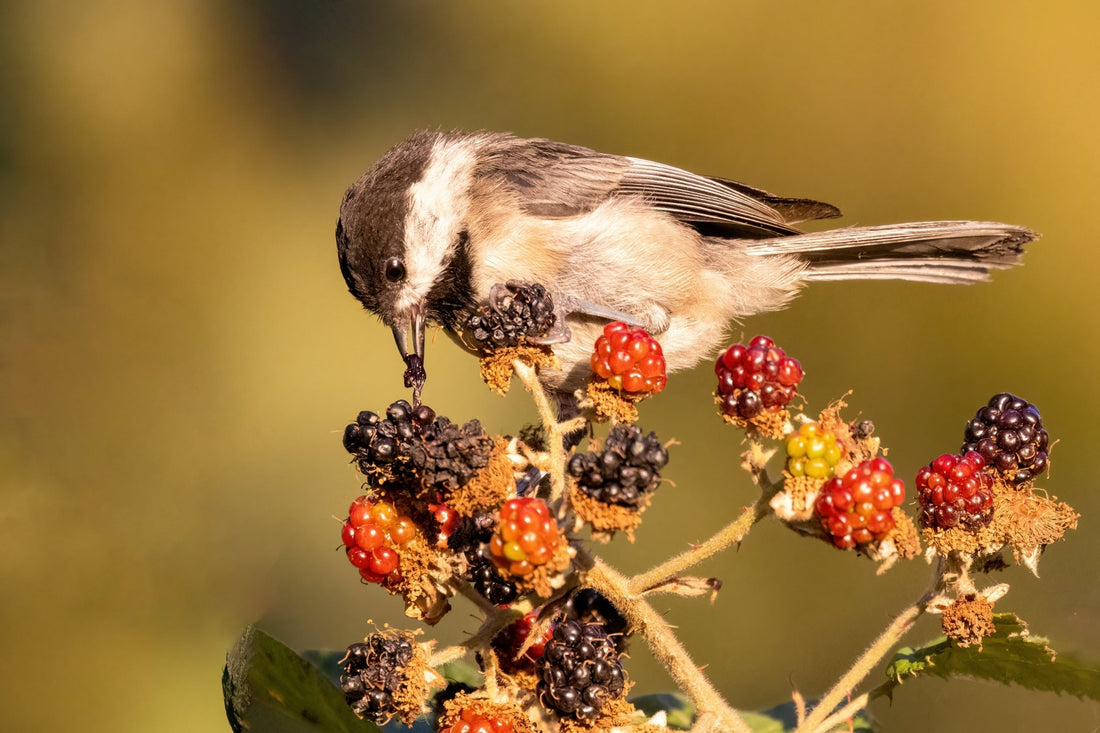Feeding the Birds in Your Garden: A Year-Round Guide to Creating a Bird-Friendly Haven
If you think your garden is a serene sanctuary of greenery, wait until you add the symphony of chirping birds. Plus, it’s a fantastic way to get the kids involved in something that doesn’t require Wi-Fi. So, let’s dive into how you can turn your backyard into a bird haven all year round.
Why Attract Birds to Your Garden?
Attracting birds to your garden isn’t just about the aesthetic pleasure of seeing a flash of colour or hearing a sweet song. Birds are natural pest controllers, keeping your garden's bug population in check without the need for chemical sprays. They also help with pollination and seed dispersal, contributing to the overall health of your garden. Watching birds can be a soothing, stress-relieving activity that the whole family can enjoy.

Planting for the Birds: Plants They Love
Trees and Shrubs: The Foundation
Trees and shrubs are the backbone of a bird-friendly garden. They provide shelter, nesting sites, and food. Here are some bird-approved choices:
- Red Maple (Acer rubrum): Seeds from these maples are a favourite for finches and grosbeaks.
- White Pine (Pinus strobus): The seeds from the tree attract chickadees and nuthatches.
- Serviceberry (Amelanchier canadensis): This shrub blooms early in spring, attracting pollinators, and its berries are a favourite for species like thrushes and cardinals.
- Dogwood (Cornus spp.): With its bright berries, this shrub attracts a variety of birds, from sparrows to bluebirds.
- Sumac (Rhus typhina): Not only does this shrub provide vibrant fall colour, but its red drupes are also a winter food source for birds.
Perennials: The Reliable Returners
Perennials provide consistency in your bird-friendly garden. Here’s what to plant:
- Echinacea (Echinacea purpurea): The seeds of this perennial are a feast for finches and other small birds.
- Black-eyed Susan (Rudbeckia hirta): Besides adding a splash of colour, the seeds are a magnet for goldfinches.
- Bee Balm (Monarda spp.): This plant not only attracts hummingbirds but also brings in insects that other birds feed on.
Annuals: Seasonal Spectacles
Annuals can be the icing on the cake, providing seasonal food sources and splashes of colour that attract birds:
- Sunflowers (Helianthus annuus): These giants are a triple threat—providing food, perching spots, and entertainment as you watch the birds hang upside down to pluck the seeds.
- Zinnias (Zinnia spp.): Besides being easy to grow, these annuals attract hummingbirds and provide seeds for small birds.
- Marigolds (Tagetes spp.): Great for attracting insects, which then attract insectivorous birds like warblers.

How to Attract Birds to Your Garden
Feeders, Water, and Nesting Sites
- Feeders: Set up a variety of feeders with different types of seeds, suet, and nectar. For example, tube feeders are great for small birds like finches, while platform feeders can attract larger birds like cardinals and jays.
- Water: A birdbath or a small pond can be a major attraction, especially if the water is moving. Consider adding a solar-powered fountain to keep the water fresh and inviting.
- Brush Piles: Create a small pile of branches and leaves in a quiet corner of your garden for shelter.
- Nesting Sites: Provide birdhouses of different sizes to cater to different species. Bluebirds, chickadees, and wrens are all likely to take up residence if the conditions are right.
How Kids Can Help
Getting kids involved in bird-friendly gardening is a fantastic way to teach them about nature and responsibility.
- Building Birdhouses: Kids can help build and paint birdhouses, making them a creative and educational project.
- Filling Feeders: Let them be in charge of keeping the feeders full. They’ll love watching the birds that come to visit.
- Birdwatching Journals: Encourage kids to keep a journal of the birds they see, noting the different species and their behaviours.
- Planting Flowers: Let them pick and plant bird-friendly flowers—they'll be thrilled to see "their" plants attract birds.

Bird-Friendly Tips for All Four Seasons
Spring:
- Start by planting native trees and shrubs that provide food and shelter.
- Clean and fill bird feeders as birds return from migration.
Summer:
- Keep birdbaths full and clean, as birds will be thirsty in the heat.
- Plant annuals that bloom during summer, attracting hummingbirds and other pollinators.
Fall:
- Leave seed heads on perennials like coneflowers and Black-eyed Susans, so birds have something to snack on.
- Plant shrubs that produce berries, ensuring a food source through winter.
- Leave the around the gardens so resist the urge to rake all your leaves—leaf litter harbours insects, which are a great protein source for birds.
Winter:
- Provide high-energy foods like suet and sunflower seeds.
- Ensure water sources don’t freeze by adding a heater to your birdbath.
Birds You Can Expect to See
Easy to Attract:
- Black-capped Chickadee: These curious little guys are often the first to find feeders.
- American Goldfinch: Love nyjer seeds and sunflower seeds—bright yellow in summer, olive in winter.
- Northern Cardinal: The males’ bright red feathers make them easy to spot, even in the snow.
More Rare Visitors:
- Eastern Bluebird: Attracted to open spaces with scattered trees, they love mealworms.
- Cedar Waxwing: Look for these sleek beauties when your serviceberry or crabapple trees are fruiting.
- Pileated Woodpecker: The largest woodpecker in North America might pay a visit if you have mature trees.

So there you have it, creating a bird-friendly garden isn’t just about attracting wildlife; it’s about building a thriving ecosystem in your own backyard. Plus, it’s a great way to engage with nature, relax, and make your garden a true sanctuary. So grab your gardening gloves, and let’s get planting!
Happy gardening!




